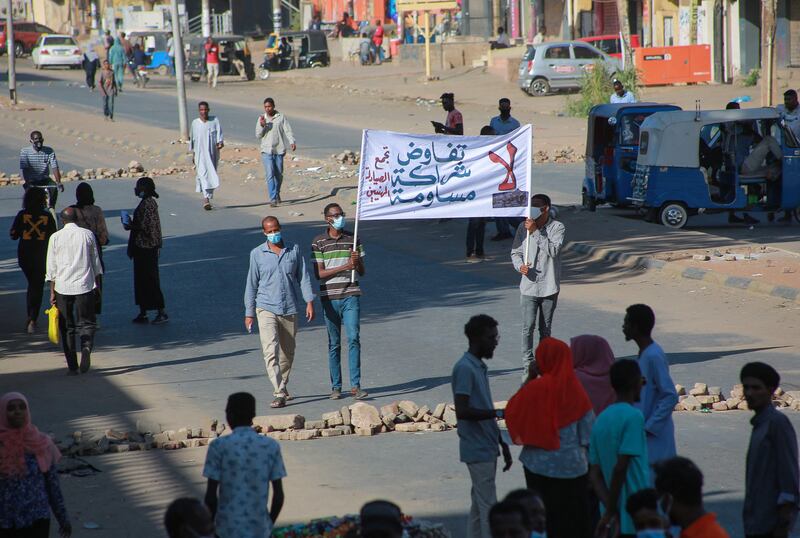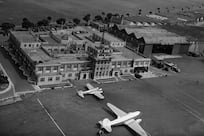Thousands of people poured on to the streets of Sudan’s capital on Monday chanting “freedom!” and hoisting banners decrying the October 25 coup that has derailed the country’s democratic transition.
Police fired tear gas at the marchers in an apparent attempt to disrupt the gathering before it grew larger. The rallies took place in the capital's three districts — Khartoum, Umm Dourman and Khartoum Bahry — as well as in several other locations in western and northern Sudan.
Monday's protests were called by the Sudanese Professionals Association (SPA) and the Resistance Committees. The organisations spearheaded a four-month uprising in 2018 and 2019 against the 29-year rule of dictator Omar Al Bashir, who was removed by his generals in April 2019.
They resumed their street activism after the military takeover, mobilising hundreds of thousands to protest on the streets against the coup and a deal reached on November 21 to reinstate Abdalla Hamdok as prime minister a month after his dismissal by army chief and coup leader Gen Abdel Fattah Al Burhan.
At least 44 protesters have died since the coup, mostly by gunshots, and hundreds more have been injured.
The US Embassy in Khartoum on Monday said: “We stand with the Sudanese people as they seek freedom, peace, and justice in today’s demonstrations, and welcome their government’s commitment to protection of peaceful protesters.”

The US, United Nations and African Union have condemned the military takeover. The US and the World Bank have yet to release hundreds of millions of dollars' in aid they froze in the wake of the coup.
The protests of the past eight weeks have piled pressure on Mr Hamdok and Gen Al Burhan to resolve the political crisis that has gripped Sudan since the coup.
Mr Hamdok's reinstatement on November 21, a month after his dismissal by the military, has only fuelled the crisis.
Mr Hamdok, who had led a civilian cabinet supported by the pro-democracy movement until the coup, is viewed by some now as a fig leaf for direct military rule. He also has yet to form a government of independent technocrats as promised a month ago.
“The significance of these rallies is that they send a clear message to the military that the people are adamant to be ruled by civilians no matter how long it takes for this to happen,” said one of the protesters, retired schoolteacher Moatasam Fath Al Rahman.
“The wiser among us should come up with a solution that spares the country a slide into chaos.”
Monday’s protesters carried Sudan’s red, black, white and green flags and banners denouncing the military’s power grab and Gen Al Burhan.
Hundreds of police were deployed near the presidential palace overlooking the Blue Nile, but there were no signs of troops on the streets. They dispersed the protesters with tear gas as they came closer to the palace at the heart of Khartoum.
Most stores were open in central Khartoum, but there was little traffic on the streets by the afternoon.
“Our marches will continue until power is handed over to civilians,” said Amira Othman, a protester who marched on the palace.
“No negotiation and no partnership!” she said, alluding to the August 2019 power-sharing deal between the military and the pro-democracy movement.
That deal provided the constitutional basis of the transitional period ahead of elections now scheduled for 2023.
Gen Al Burhan repealed the parts in the document pertaining to the role of the pro-democracy movement in the transition, appointed himself head of state and replaced the movement's representatives on the ruling Sovereign Council with other civilians.







